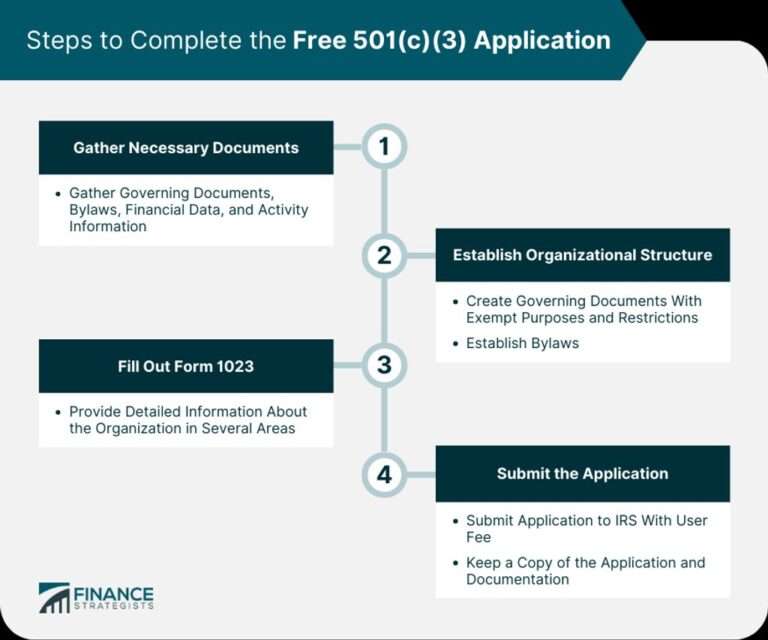The Customer Journey Map: Navigating Engagement
Overview
What is a Customer Journey Map?
A Customer Journey Map is a visual representation of the steps a customer takes when interacting with a company or brand. It provides a comprehensive view of the customer’s experience, from the initial encounter to post-purchase interactions. By mapping out the customer journey, businesses can gain valuable insights into the various touchpoints, emotions, and motivations that influence customer behavior. This understanding allows companies to identify pain points, optimize customer interactions, and ultimately enhance the overall customer experience. A well-designed Customer Journey Map is an essential tool for businesses looking to build strong customer relationships and drive customer loyalty.
Why is a Customer Journey Map important?
Understanding the customer journey is crucial for businesses to deliver exceptional customer experiences. By mapping out the various touchpoints and interactions that customers have with a brand, organizations can identify pain points and friction areas in the customer journey. This allows them to make targeted improvements and optimize the customer experience. Additionally, a customer journey map helps businesses gain insights into customer emotions and motivations, enabling them to tailor their marketing strategies and communication efforts. Overall, a well-executed customer journey map is instrumental in enhancing customer satisfaction, loyalty, and ultimately, business success.
Key components of a Customer Journey Map
The key components of a Customer Journey Map include identifying customer touchpoints, analyzing customer emotions and motivations, and gaining insights from customer feedback. By understanding these components, businesses can effectively map out the customer journey and create personalized experiences at each stage. Identifying customer touchpoints involves identifying the various interactions and touchpoints that customers have with the business, both online and offline. Analyzing customer emotions and motivations helps businesses understand the underlying factors that drive customer behavior and decision-making. Gaining insights from customer feedback allows businesses to gather valuable information about customer preferences, pain points, and areas for improvement. By incorporating these key components into their Customer Journey Maps, businesses can enhance customer engagement and satisfaction, ultimately leading to increased loyalty and revenue.
Understanding the Customer
Identifying customer touchpoints
When identifying customer touchpoints, it is important to consider every interaction a customer has with your brand throughout their journey. These touchpoints can include website visits, social media interactions, customer service calls, and more. By understanding and mapping out these touchpoints, you can gain valuable insights into the customer experience and identify areas for improvement. CX success relies on effectively identifying and optimizing these touchpoints to create a seamless and satisfying customer journey.
Analyzing customer emotions and motivations
Analyzing customer emotions and motivations is a crucial step in understanding the customer journey. By delving into the emotional and psychological factors that influence customer behavior, businesses can gain valuable insights into what drives their customers. This analysis helps identify pain points and areas of opportunity for improvement. Emotions play a significant role in shaping customer experiences, and understanding these emotions can help businesses create more personalized and engaging interactions. Similarly, motivations drive customers to take specific actions, and by understanding these motivations, businesses can tailor their messaging and offerings to better meet customer needs. By analyzing customer emotions and motivations, businesses can enhance customer satisfaction, loyalty, and ultimately, their bottom line.
To gain a deeper understanding of customer emotions and motivations, businesses can employ various research methods, such as surveys, interviews, and observation. These methods allow businesses to collect qualitative and quantitative data, which can then be analyzed to uncover patterns and insights. Additionally, businesses can leverage customer feedback and sentiment analysis tools to gain real-time insights into customer emotions and motivations. By combining these research methods and tools, businesses can develop a comprehensive understanding of their customers and create strategies that resonate with their target audience.
Unifire is a powerful customer journey mapping tool that can assist businesses in analyzing customer emotions and motivations. With its intuitive interface and robust features, Unifire enables businesses to visualize the customer journey, identify touchpoints, and analyze customer emotions at each stage. By using Unifire, businesses can gain a deeper understanding of their customers and make data-driven decisions to improve customer engagement and satisfaction.
Ready to dive into the world of customer journey mapping? Check out our step-by-step guide on How to Create a Customer Journey Map. This guide provides practical tips and best practices for effective customer journey mapping, helping businesses navigate the complexities of the customer journey and optimize their engagement strategies.
Gaining insights from customer feedback
Once you have collected customer feedback, it is important to analyze it thoroughly to gain valuable insights. Customer feedback provides a wealth of information about their experiences, preferences, and pain points throughout their journey. By analyzing customer feedback, you can identify patterns and trends that can help you understand their needs and expectations better. This information can then be used to improve your products, services, and overall customer experience. Additionally, customer feedback can also reveal areas where your business may be falling short, allowing you to address and resolve any issues. It is crucial to actively listen to your customers and take their feedback seriously in order to continuously enhance your customer journey. By leveraging customer feedback, you can make data-driven decisions and provide a more personalized and satisfying experience for your customers.
Ready to optimize your customer journey?
Unifire can help you navigate the complexities of customer engagement. With our AI-powered platform, you can easily collect, analyze, and leverage customer feedback to enhance your customer journey. Sign up for a free trial today and unlock the full potential of your customer experience!
How to effectively analyze customer feedback:
- Collect feedback from multiple channels: Gather feedback from various touchpoints such as surveys, social media, and customer support interactions.
- Organize and categorize feedback: Create a system to organize and categorize feedback based on themes or topics.
- Identify patterns and trends: Look for common themes, sentiments, and trends in the feedback to understand customer preferences and pain points.
- Prioritize actionable insights: Focus on insights that can be acted upon to improve your products, services, or processes.
- Share insights across teams: Ensure that the insights gained from customer feedback are shared with relevant teams and stakeholders to drive improvements.
- Monitor and measure impact: Continuously monitor and measure the impact of changes made based on customer feedback to assess their effectiveness.
By following these steps, you can effectively analyze customer feedback and use it to drive meaningful improvements in your customer journey.
Mapping the Customer Journey
Creating customer personas
After understanding the key components of a customer journey map, the next step is to create customer personas. Customer personas are fictional representations of your target customers that help you understand their needs, preferences, and behaviors. By creating detailed personas, you can gain insights into the different customer segments and tailor your engagement strategies accordingly. Customer personas provide a holistic view of your customers, allowing you to identify their pain points, motivations, and goals at each stage of the customer journey. This information is crucial for developing personalized experiences and delivering value at every touchpoint. With customer personas, you can effectively map out the customer journey and ensure that your engagement efforts are aligned with the needs and expectations of your target audience.
Plotting customer interactions
After identifying customer touchpoints, analyzing customer emotions and motivations, and gaining insights from customer feedback, the next step in creating a customer journey map is plotting customer interactions. This involves mapping out the specific interactions and touchpoints that customers have with your brand at each stage of their journey. By visualizing these interactions, you can identify gaps or areas for improvement in the customer experience. Plotting customer interactions allows you to see the sequence of touchpoints, understand the customer’s actions and behaviors, and evaluate the effectiveness of each interaction. It helps you identify opportunities to enhance customer engagement, streamline processes, and deliver a seamless experience across all channels. By mapping out customer interactions, you can gain a comprehensive understanding of the customer journey and make data-driven decisions to improve the overall customer experience.
Conclusion
Benefits of using a Customer Journey Map
Customer journey mapping provides valuable insights into the customer’s experience with a brand. By visualizing the entire customer journey, businesses can identify pain points, areas of improvement, and opportunities for engagement. This understanding allows companies to create personalized and targeted strategies to enhance customer satisfaction and loyalty. Customer journey mapping also helps in aligning internal teams and departments, ensuring a seamless and consistent experience across touchpoints. Additionally, it enables businesses to prioritize resources and investments based on the most impactful stages of the customer journey. Overall, implementing a customer journey map can lead to improved customer experiences, increased customer retention, and ultimately, business growth.
Challenges in implementing a Customer Journey Map
Implementing a Customer Journey Map can be a complex process that requires careful planning and execution. One of the major challenges is identifying all the touchpoints that customers have with your brand. This involves conducting thorough research and analysis to ensure that no touchpoint is overlooked. Another challenge is analyzing customer emotions and motivations, as these can be subjective and difficult to measure. Additionally, gaining insights from customer feedback can be time-consuming and require the implementation of effective feedback collection methods. Despite these challenges, the benefits of using a Customer Journey Map are significant. It helps businesses gain a deeper understanding of their customers, identify pain points, and optimize the customer experience. To overcome these challenges, it is important to follow best practices for effective Customer Journey Mapping, such as involving cross-functional teams, using data-driven insights, and continuously iterating and improving the map. If you’re looking to implement a Customer Journey Map for your business, consider partnering with Unifire. Contact us through partner@unifire.ai to learn more about how Unifire can help you navigate the challenges and create a seamless customer journey.
Best practices for effective Customer Journey Mapping
When it comes to effective Customer Journey Mapping, there are several best practices to keep in mind. First, it is essential to segment leads based on their specific needs and preferences. By understanding the different segments of your customer base, you can tailor your marketing efforts to better meet their expectations. Additionally, it is crucial to gather and analyze data from various touchpoints to gain a comprehensive understanding of customer behaviors and motivations. This data can provide valuable insights into how to improve the customer experience at each stage of their journey. Finally, regular evaluation and iteration of your Customer Journey Map are necessary to ensure its ongoing effectiveness. By continuously monitoring and adjusting your map, you can stay attuned to changes in customer preferences and adapt your strategies accordingly. By following these best practices, you can create a Customer Journey Map that truly enhances engagement and drives positive customer experiences.
In conclusion, Unifire is the ultimate tool for extracting summaries, keywords, and titles from your podcast and repurposing your content. With Unifire, you can save time and effort by automating the process of creating engaging and informative articles. Start using Unifire today and take your content to the next level!








